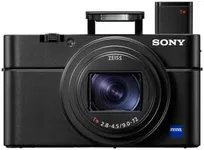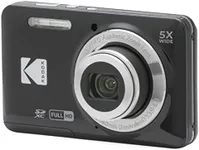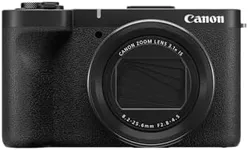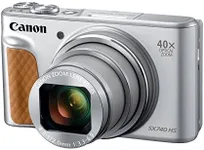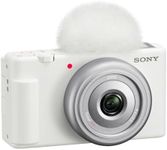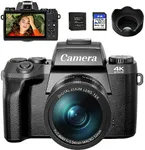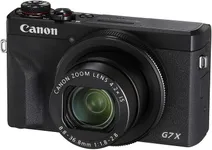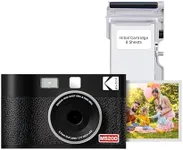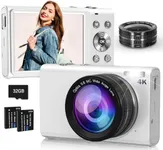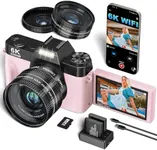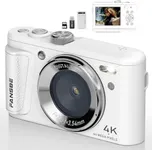Buying Guide for the Best Point and Shoot Cameras
When choosing a point-and-shoot camera, it's important to keep in mind why you're interested in this kind of camera—simplicity, portability, and decent photo quality without the fuss of interchangeable lenses or complex manual controls. Focus on what you'll use the camera for: casual family snapshots, travel documentation, social events, or maybe some creative photography in your spare time. The best fit is one that matches your usage style, fits comfortably in your hand or pocket, and has features you'll actually use, making your photography experience enjoyable and hassle-free.Sensor SizeThe sensor is a key component that captures the image, and its size directly affects image quality, low light performance, and background blur (bokeh). In point-and-shoot cameras, sensors tend to be small to keep the camera compact. The major types you’ll see are 1/2.3-inch (most common), 1-inch (better quality), and occasionally larger ones. Smaller sensors usually mean the camera is smaller and lighter but might not perform as well in dim lighting or produce professional-style background blur. Larger sensors provide nicer quality and better low-light performance but often make the camera a bit bulkier. If you mostly shoot outdoors in good lighting, a smaller sensor will be fine, but if you want sharper photos in various lighting situations, opt for a camera with a 1-inch or larger sensor.
Zoom Range (Optical Zoom)Optical zoom tells you how much you can magnify your subject without losing image quality, as opposed to digital zoom, which simply crops and can make pictures blurry. Point-and-shoot cameras often advertise their zoom as a range like 5x, 10x, or even 30x. A high zoom (20x or more) is useful if you want to photograph distant subjects—like wildlife or sports—while a lower zoom (around 3x–5x) is usually enough for daily use, family gatherings, or close group photos. Choose a zoom range that fits your activities: more zoom for trips and adventure, less for straightforward snapshots.
Aperture (Lens Brightness)Aperture, labeled as f/number (like f/2.8 or f/4.0), shows how much light the camera’s lens lets in. A lower f-number means more light can enter, which helps in low light situations and allows more background blur for creative portraits. In point-and-shoots, you’ll often see variable apertures (e.g., f/3.3–f/6.9 depending on zoom level). If you want easy indoors or night shots without flash, look for a wider aperture (lower starting f-number), but if most of your shooting is outdoors in good light, aperture is less of a deciding factor.
Image StabilizationImage stabilization reduces blurriness caused by shaky hands, especially noticeable when zoomed in or in low light. Cameras use optical or digital stabilization, with optical usually giving better real results. If you plan to shoot in less than perfect light, zoom in a lot, or shoot while walking, this feature will help keep your photos sharp. For quick, casual snapshots in good lighting, you might not need it as much, but it's generally a helpful feature for everyone.
Autofocus SystemAutofocus is technology that helps your camera lock on to the subject quickly, ensuring your shots are sharp and clear. Some cameras are fast and accurate, especially with face or eye detection for people photos. Slower autofocus may struggle in low light or with moving subjects. If you’ll be shooting moving kids, pets, or action, a reliable and quick autofocus will make life easier. For mainly still or landscape shots, autofocus speed is less critical.
Video CapabilitiesMany point-and-shoot cameras can record video as well as still photos, often in HD (1080p) or even 4K. The quality and ease of use can vary—some let you zoom or change focus smoothly, while others are best for short clips. If you want to record family events, vacations, vlogs, or YouTube content, consider higher resolution and better video features. If your videos are only for simple sharing or memories, basic HD video will suffice.
Screen type and sizeThe screen on the back is how you frame shots, review photos, and change settings. Large, bright screens are easier to see, especially outdoors. Some cameras have touchscreens for easier navigation. Articulating or tilt screens let you shoot from tricky angles or take selfies. If you plan to use your camera for travel, creative angles, or self-portraits, a flexible, good-quality screen will make things easier. If you mainly point and shoot in a traditional way, basic screens are fine.
Wireless ConnectivityWi-Fi or Bluetooth allow you to transfer photos directly to your phone or computer without needing cables. This makes it easy to quickly share photos on social media or back them up. If you love sharing images right away or want to manage your files easily, wireless connectivity is a big plus. If you’re not interested in moving files quickly, this feature isn’t essential.
Size and WeightOne of the best parts of point-and-shoot cameras is their portability. They range from truly pocket-sized to slightly larger, with big zooms or screens making some models bulkier. Think about how you’ll carry your camera. If you want something to slip into a jeans pocket or tiny purse, go for the smallest size possible. If you’re okay with using a small bag, you can pick options with more features or longer zoom.




